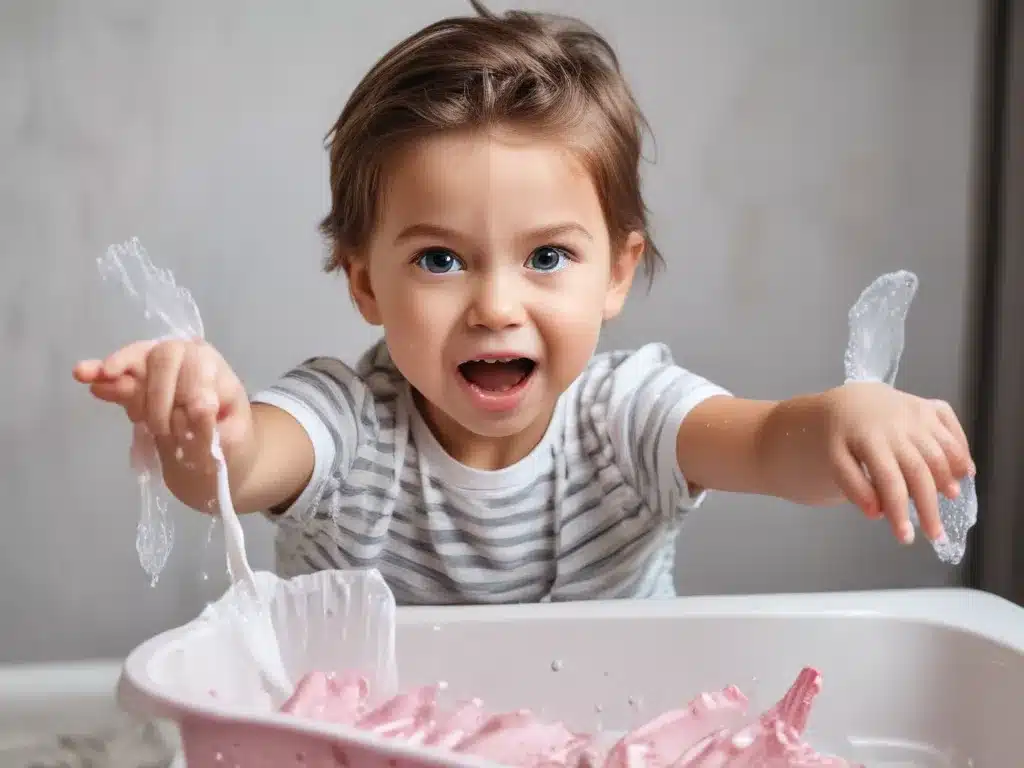Introduction
As a parent, keeping your little ones safe and healthy is a top priority. From the moment they begin exploring the world around them, they encounter countless germs and bacteria. While exposure to certain microbes is essential for building a robust immune system, it’s crucial to strike a balance and maintain a clean, hygienic environment. This is where kid-safe disinfecting comes into play.
The Importance of Disinfecting
Disinfecting is the process of eliminating harmful microorganisms from surfaces. It goes beyond traditional cleaning methods by killing bacteria, viruses, fungi, and other pathogens. This step is particularly important in areas where children play, eat, and interact, as it helps prevent the spread of illnesses and infections.
Understanding the Difference: Cleaning vs. Disinfecting
Before delving into disinfecting tips and tricks, it’s important to understand the distinction between cleaning and disinfecting. Cleaning involves the physical removal of dirt, grime, and debris from surfaces, while disinfecting employs the use of chemical agents or other methods to eliminate microorganisms.
Kid-Safe Disinfecting Methods
When it comes to disinfecting around children, safety is paramount. Here are some kid-safe disinfecting methods you can employ:
1. Vinegar and Water Solution
Vinegar is a natural disinfectant that can be used to clean and sanitize various surfaces. To create a kid-safe disinfecting solution, mix equal parts of vinegar and water in a spray bottle. This solution is effective against many common household germs and is safe for use around children when used as directed.
2. Hydrogen Peroxide
Hydrogen peroxide is another natural disinfectant that can be used to clean and disinfect surfaces. Dilute it with water according to the manufacturer’s instructions and use it to wipe down toys, surfaces, and high-touch areas. Hydrogen peroxide is effective against a wide range of microorganisms and is generally safe for use around children when used properly.
3. Essential Oils
Certain essential oils, such as tea tree oil, lemon oil, and eucalyptus oil, have natural antimicrobial properties. You can create a DIY disinfecting spray by combining a few drops of these oils with water in a spray bottle. Be sure to use only kid-safe essential oils and follow the recommended dilution ratios.
4. Commercial Disinfectants
If you prefer to use commercial disinfectants, look for products labeled as “kid-safe” or “green.” These products are formulated with safer ingredients and are designed for use around children. Always read and follow the manufacturer’s instructions carefully.
Disinfecting High-Risk Areas
Certain areas in your home are more prone to harboring germs and bacteria, making them high-risk zones for potential illnesses. Here are some key areas to focus on:
1. Toys
Children’s toys are notorious for collecting germs and bacteria. Regularly disinfect plastic toys by soaking them in a vinegar solution or wiping them down with a hydrogen peroxide solution. For plush toys, consider washing them in hot water or using a toy-safe disinfecting spray.
2. Diaper Changing Areas
Diaper changing stations and surfaces should be disinfected after each use to prevent the spread of bacteria and viruses. Use a disinfecting wipe or spray to clean the area thoroughly.
3. Kitchens and Bathrooms
Kitchens and bathrooms are breeding grounds for various microorganisms. Disinfect countertops, sinks, toilets, and other high-touch areas regularly using your preferred kid-safe disinfecting method.
4. Playrooms and Nurseries
Children spend a significant amount of time in playrooms and nurseries. Disinfect floors, surfaces, and toys in these areas regularly to maintain a clean and healthy environment.
Proper Disinfecting Techniques
Effective disinfecting requires more than just spraying or wiping surfaces. Follow these techniques for optimal results:
-
Pre-clean: Before disinfecting, make sure to clean the surface thoroughly to remove any visible dirt or debris. This step is essential for allowing the disinfectant to work effectively.
-
Dwell Time: Most disinfectants require a certain amount of time to work, known as the “dwell time.” Follow the manufacturer’s instructions and allow the disinfectant to remain on the surface for the recommended duration.
-
Ventilation: When using chemical disinfectants, ensure proper ventilation by opening windows or using fans to circulate air and prevent the buildup of fumes.
-
Protective Gear: Depending on the disinfectant you’re using, consider wearing gloves or a mask to protect yourself from potential skin or respiratory irritation.
Maintaining a Balanced Environment
While disinfecting is crucial for protecting your children’s health, it’s also important to maintain a balanced environment. Overuse of harsh chemicals or excessive disinfecting can disrupt the natural microbiome and potentially lead to adverse health effects.
Aim for moderation and strike a balance between disinfecting and allowing exposure to beneficial microbes. Focus on high-risk areas and use kid-safe disinfecting methods whenever possible.
Conclusion
Keeping your little ones safe and healthy is a priority for every parent. By incorporating kid-safe disinfecting techniques into your cleaning routine, you can effectively eliminate harmful bacteria and create a clean, hygienic environment for your children to thrive. Remember, disinfecting is just one aspect of maintaining a balanced and healthy home. With the right approach and a combination of cleaning, disinfecting, and fostering a robust immune system, you can bid farewell to unwanted bacteria while ensuring your child’s well-being.







